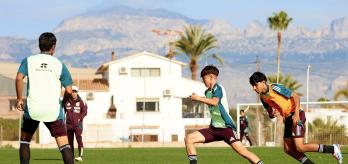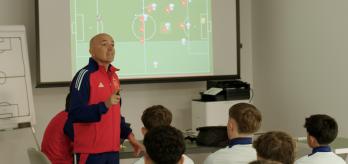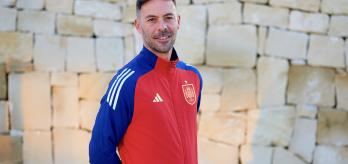Vilches, a former professional footballer, found his calling six months after retiring from the game when he became the coordinator of the Spanish national system’s youth academy. Three and a half years into his work with the federation, Vilches describes how he and his team select young talent. In this interview, he outlines the ideal characteristics of the Spanish player and explains why intelligence will be the most desirable trait in a player in the future.
Key points
-
Spain has an ingrained possession-based game model. The Spanish Football Association’s (RFEF) scouts monitor players from a young age to match technical and tactical qualities with the characteristics that fit the Spanish style of play.
-
Spanish players are technically gifted and psychologically mature, ready to challenge themselves and play under extreme pressure.
-
As football becomes faster and players get fitter and more technical, intelligence and game understanding make the biggest difference.
Watch interview
Read summary
Part 1: The scouting process
In the first part of the interview, Vilches discusses his transition from player to scout and discusses the RFEF’s scouting system. Vilches and his staff monitor as many players as possible on a regular basis. They observe games live and produce written and video reports on players who might possess the characteristics the national youth sides are looking for. This has been facilitated by an increase in funding from the RFEF. The objective is to provide the head coaches with the widest possible player pool to choose from. Potential is a key marker; players may not have the desired output currently, but if they can adapt to the coach’s demands, they have a stronger chance of being selected. Immediate performance is secondary to creating a deep player pool.
Part 2: Defining the Spanish player
Spanish players are expected to be supremely technical. While other associations may prioritise extremely physical or fast players, Vilches states that Spain seeks technically gifted footballers who can read the game and fit into the national team’s possession-based style. He cites Lamine Yamal and Pau Cubarsí as examples of Spanish players who combine technical brilliance with mental strength. What separates them from their peers is their ability to play under extreme pressure at a young age. The RFEF and clubs from LaLiga work hard to monitor young players and psychologically prepare them to mature quickly, avoiding the mistakes typical teenagers would make.
Part 3: Player profiles
The prototypical Spanish midfielder, like Sergio Busquets or Xabi Alonso, must control the rhythm of the game by positioning themselves correctly to receive the ball and continue circulating it. In Spain, the midfield pivot – or number 6 – is not a typical defensive midfielder who aggressively shuts down the opposition. Positioning and providing balance in defence are their main objectives. Spanish wingers need to be a threat when taking on players in 1v1 situations and providing goalscoring opportunities. Speed and goalscoring ability are essential. Unlike in other countries, strikers are expected to help facilitate play, being comfortable in possession outside the box and clinical in the penalty area.
Part 4: Players of the future
In the final part of the interview, Vilches discusses the intelligence that players will need to play football in the future. As head of scouting, Vilches is acutely aware of how well-prepared today’s footballers are. Thanks to the implementation of nutrition, strength and conditioning, and improved academies, players are in peak physical condition and possess supreme technical skills and tactical understanding. At the same time, football is becoming more difficult to play as spaces are getting smaller and the ball is moving faster. Vilches believes intelligence is the most important trait for adapting to the football of tomorrow. Players who have superior game understanding and make the fewest errors will thrive.











